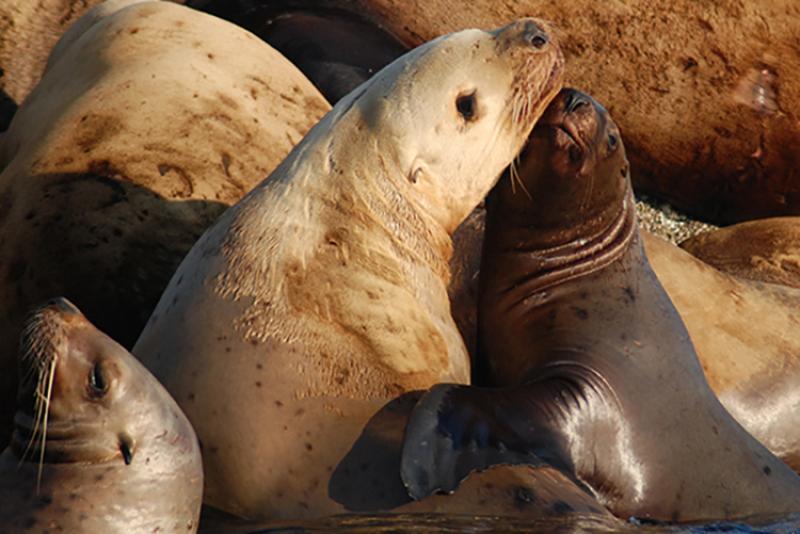
The “Steller” success story of a sea lion population
by NOAA Fisheries 26 Jun 2023 20:58 UTC

A Steller sea lion cow and calf © Alaska Department of Fish & Game
Steller sea lions were named for Georg Wilhelm Steller, a German surgeon and naturalist who first documented the species in 1742.
They were once so abundant throughout the North Pacific that Indigenous peoples and settlers throughout the coastal North Pacific Ocean used them for meat, hides, and oil. The species still plays an important role to Alaska Natives for food and handicrafts.
Found in colder temperate to subarctic waters of the North Pacific Ocean from California to Japan, Steller sea lions mate and give birth on land at breeding sites called rookeries, typically coming back each year to mate at their native rookery site. They also haul out to rest on beaches, ledges, rocky reefs, and on sea ice. While most are typically found in coastal waters on the continental shelf, they sometimes forage in much deeper continental slope waters, especially during the non-breeding season.
In 1997, Steller sea lions were formally split into two distinct population segments due to differences in their genetics, body size and shape, and population trends. Under the Endangered Species Act, the western DPS was listed as endangered and the eastern DPS remained listed as threatened.
Listing history
In the decades leading up to the species' listing, there were unexplained and widespread population declines of more than 80 percent. These declines had spread to previously stable rookeries and were accelerating—so much so that 18 organizations petitioned NOAA Fisheries to list the species under the Endangered Species Act. The Act protects more than 160 marine and anadromous species and has been overwhelmingly successful in preventing their extinction during the last 50 years. It has also put many species on the path to recovery.
On November 26, 1990, NOAA Fisheries listed Steller sea lions as a threatened species.
Path to delisting
In 2010 NOAA Fisheries initiated the first 5-year status review of the eastern DPS of Steller sea lions. The review indicated that three new rookeries had been established in Southeast Alaska since 1990, and the overall abundance of this population had consistently increased at about 3 percent per year throughout its range. This increase is generally attributed to recovery from prior predator-control programs, harvesting, and indiscriminate killing that took place before the animals were protected under the Canadian Fisheries Act of 1970 and the U.S. Marine Mammal Protection Act of 1972.
We officially delisted this population on November 4, 2013; the western DPS remains endangered.
The Endangered Species Act continues to be a powerful and effective tool for focusing conservation efforts and preserving the diversity of the planet.
Continued recovery efforts
We implemented a post-delisting monitoring plan for eastern DPS Steller sea lions to ensure their continued recovery. As part of this monitoring plan, NOAA Fisheries and the Alaska Department of Fish and Game research and monitor:
- Population trends through aerial surveys
- Survival and birth rates through resight surveys
- Movements and distribution of marked Steller sea lions
- Diet and foraging behavior
- Climate change impacts
NOAA Fisheries' scientific expertise drives innovative tools, technologies, and policies to meet ever-evolving endangered species conservation and recovery challenges. We now have a method to remotely sedate and disentangle Steller sea lions. We are currently working on testing a new deterrent device to reduce fishery interactions between Steller sea lions and salmon hook-and-line fisheries. We have also increased our outreach efforts to reduce illegal feeding and shooting, and prevent entanglements.
Continued research helps NOAA Fisheries understand the role of Steller sea lions in the marine ecosystem and inform management decisions for their conservation.
Learn more about Steller sea lion protection measures.